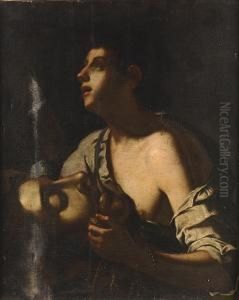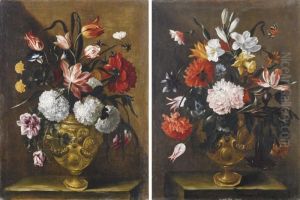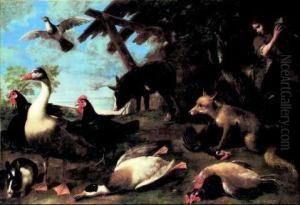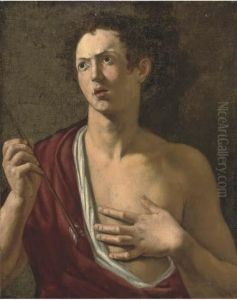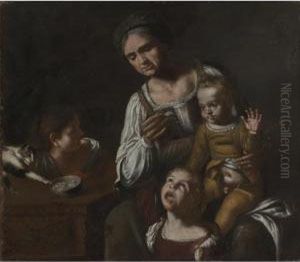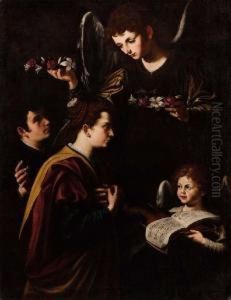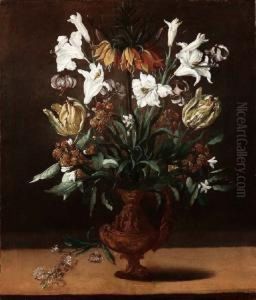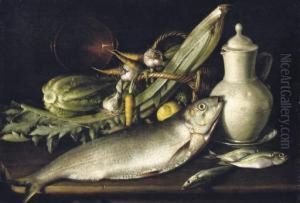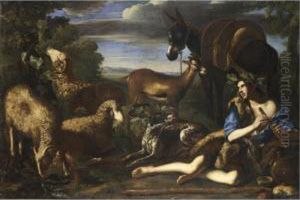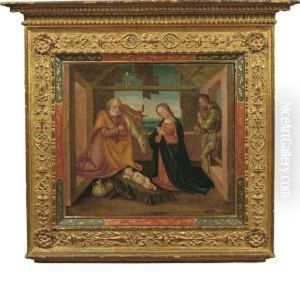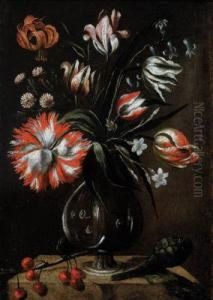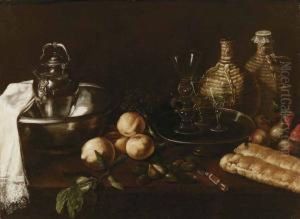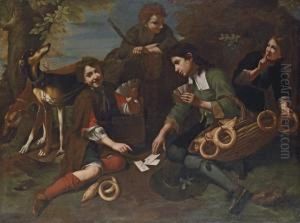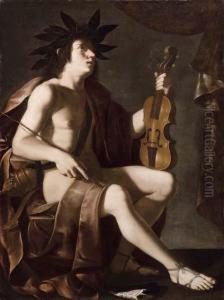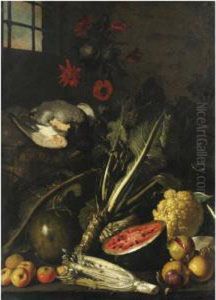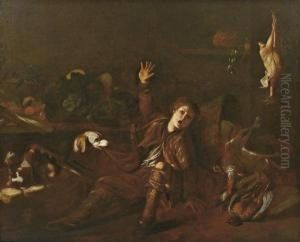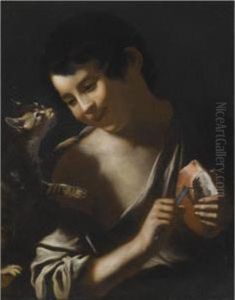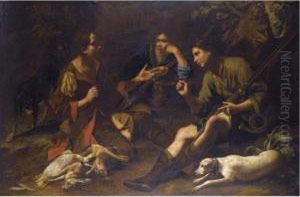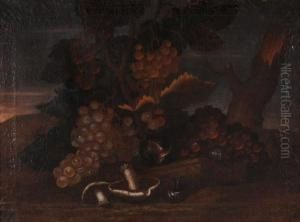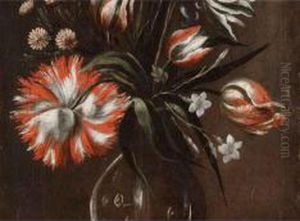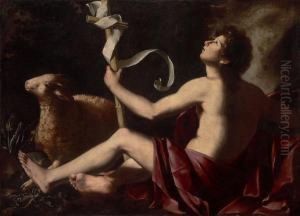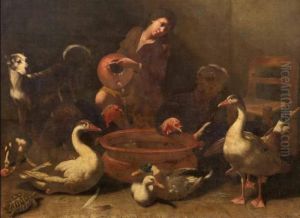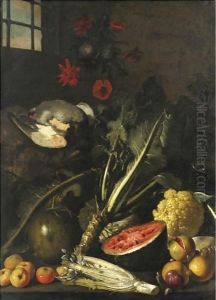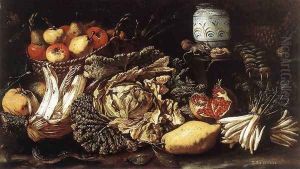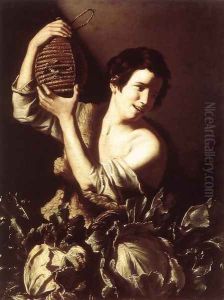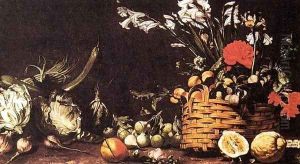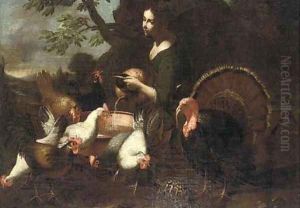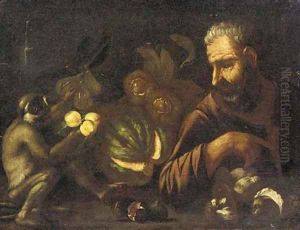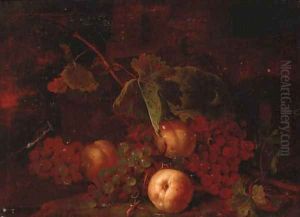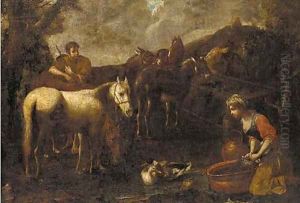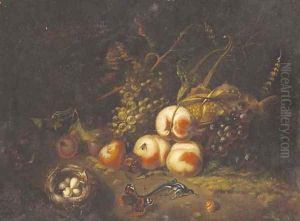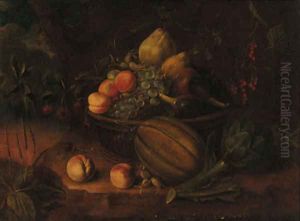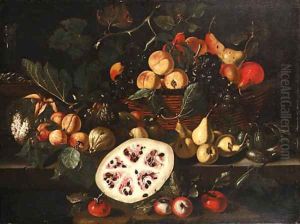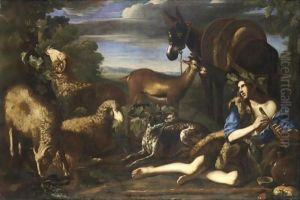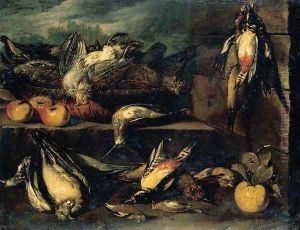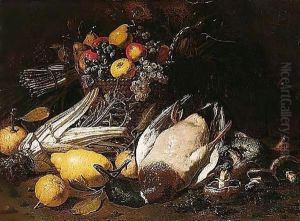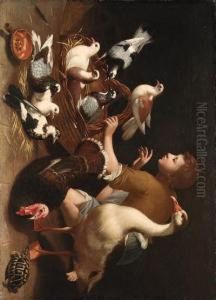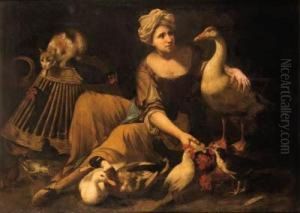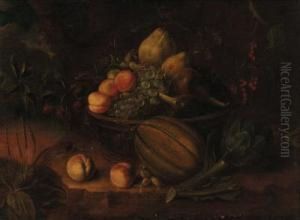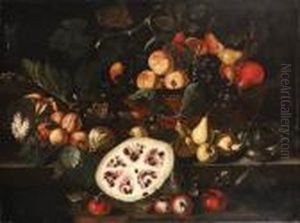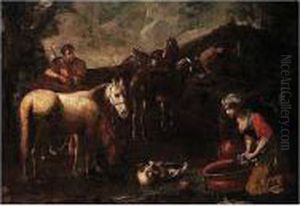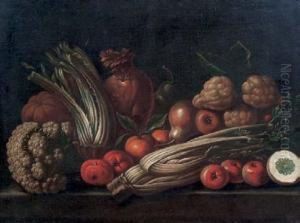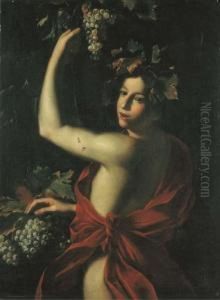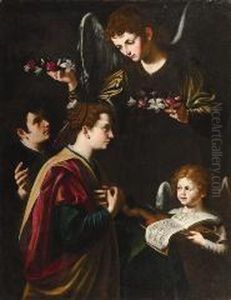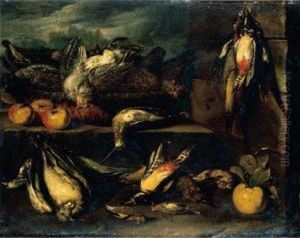Tommaso Salini (Mao) Paintings
Tommaso Salini, also known as Mao, was an Italian painter of the early Baroque period, born in 1575 in Rome, Italy. Salini is particularly noted for his work as a still life and genre painter. Although not as famous as some of his contemporaries, Salini's work has been appreciated for its detail and use of color.
Salini was a contemporary of Caravaggio and often associated with the Caravaggisti, artists who were influenced by or followers of Caravaggio’s revolutionary style. Salini’s still life paintings, which often featured flowers and fruit, reflected an interest in naturalism and a careful observation of details. These works contributed to the development of the still life genre in Italy, which became increasingly popular in the 17th century.
He was active in Rome and often collaborated with other artists of his time. However, Salini's life and work were overshadowed by the dramatic chiaroscuro and intense realism of Caravaggio. As a result, Salini did not achieve the same level of fame during his lifetime and is less well-known today.
Salini was also involved in various disputes with other artists, including a notable rivalry with Giovanni Baglione, another artist of the period who also had conflicts with Caravaggio. These personal and artistic rivalries reflect the competitive nature of the Roman art world at the turn of the 17th century.
Despite the overshadowing presence of Caravaggio, Salini’s works are now recognized for their contribution to the still life genre. His paintings are characterized by rich color palettes and the detailed depiction of various textures, from the softness of petals to the sheen of metallic objects.
Salini died in 1625 in Rome. His works can be found in various art collections and museums, offering insight into the diversity of Baroque painting and the evolution of still life as a respected genre in art history.
